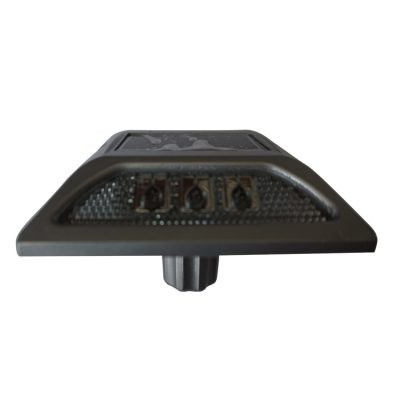The science behind road studs involves the principles of optics, materials science, and engineering. Road studs are designed to enhance visibility on roadways, especially during low-light conditions or adverse weather. Here’s a breakdown of the key scientific aspects involved in the design and functionality of road studs:
- Optics and Retroreflection: Road studs rely on retroreflection, a property of certain materials that reflects light back toward its source. This is achieved through the use of retroreflective materials such as glass beads or microprisms. When a vehicle’s headlights or other light sources strike the road stud, these materials redirect the light back toward the driver’s eyes, making the road stud appear bright and visible.
- Retroreflective Materials: The retroreflective materials used in road studs are carefully selected for their ability to efficiently reflect light. These materials are often embedded in the top surface of the road stud. Glass beads are commonly used because of their spherical shape, which allows them to efficiently reflect light in multiple directions.
- Design and Geometry: Road studs are designed with specific shapes and geometries to optimize retroreflection. Some road studs have a domed or convex top surface to ensure light is reflected back toward the driver’s line of sight, regardless of the angle at which it strikes the road stud.
- Color and Markings: Road studs come in various colors, each serving a specific purpose. White studs are typically used to mark standard lanes, while colors like red, amber, or green may indicate specific information such as hazard warnings, curve advisories, or exit lanes. These colors are also chosen for their visibility under different lighting conditions.
- Durability and Resistance: Road studs need to withstand the rigors of road traffic, including the weight of vehicles and exposure to environmental elements. The materials used in road studs are selected for their durability and resistance to wear and tear.
- Installation Techniques: Proper installation is crucial to ensure road studs remain securely in place. Installation methods vary depending on the type of road surface (asphalt, concrete, etc.) and local conditions. Common installation techniques include epoxy bonding, drilling, and insertion.
- Maintenance and Cleaning: Over time, road studs can become dirty or covered with road debris, reducing their retroreflective properties. Regular maintenance and cleaning are essential to ensure road studs remain effective in enhancing visibility.
- Visibility Range: The visibility range of road studs depends on various factors, including the type and quality of retroreflective materials used, the angle at which the headlights strike the studs, and the intensity of the light source. Engineers and designers consider these factors to determine the appropriate spacing and placement of road studs for optimal visibility.
In summary, the science behind road studs involves the use of retroreflective materials, careful design and geometry, and considerations for durability and visibility to enhance road safety and visibility for drivers, especially in low-light and adverse weather conditions. These factors are critical in ensuring that road studs effectively serve their purpose on roadways.







